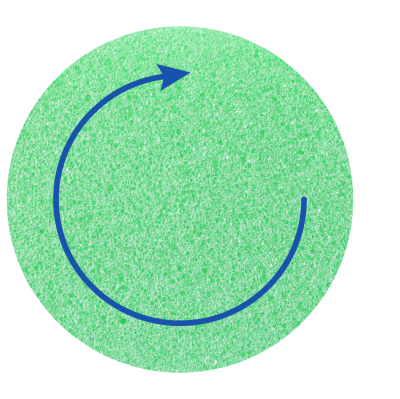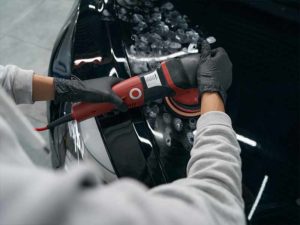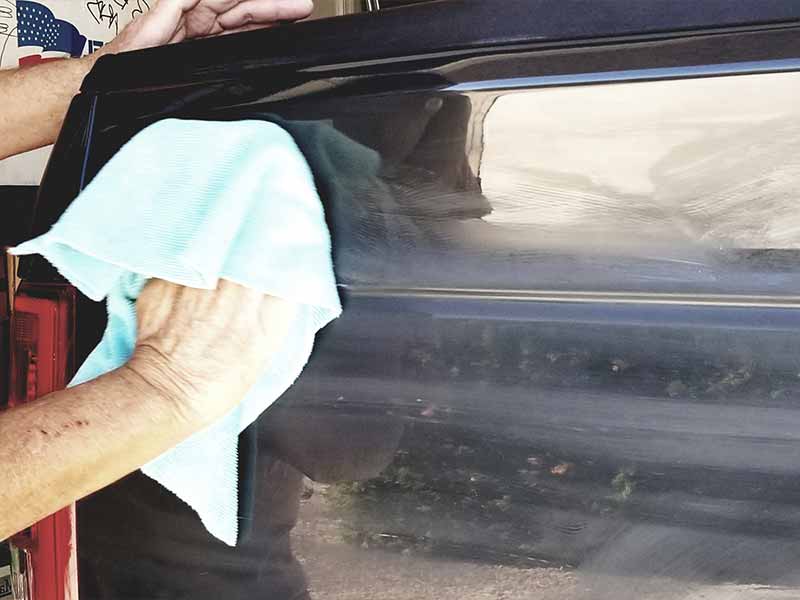Table of Contents
Using a new tool comes with a lot of questions. When it comes to something like a dual action polisher, it’s easy to get confused. So many of these polishers have a variable speed, but which dual action polisher speed setting is right for you?
Dual Action Polisher Speed Settings
Recommended DA Polisher Speed Settings Are As Follows:
- 3000-4000 OPM for Waxing
- 4000-5000 OPM for Polishing
- 5000-6000 OPM for Compounding
OPM stands for Oscillations Per Minute. Most DA polishers will indicate speed settings with single digit numbers but they may vary in meaning. Refer to your owners manual to understand how they relate to actual OPM
In this guide, we’ll discuss speed settings, why they matter, and how to pick the right speed for your application.

Understanding the Impact of the Speed
A lot of dual action polisher on the market comes with the ability to tweak the speed. In general, you’ll find speed settings somewhere between 1,500 rpm and 7,000 rpm. Alternatively, your machine might have speed settings that are a single number between 1 and 5.
This range can be broken down into three categories:
- High speed: 5,000 – 7,000 rpm, or setting 4-5
- Medium speed: 3,500 – 5,000 rpm, or setting 3-4
- Low speed: 1,500 – 3,500 rpm, or setting 2-3
As the machine goes faster, it applies the waxing product quicker and works a little deeper in your car’s topcoat. At the same time, different speeds are incompatible with different waxing products.
Uses for Low Speed
Low speed is a great option for beginners. It will show you how the machine works without the time sensitivity or extra kickback that comes with high speed.
When you’re looking to evenly spread product, low speed will help. You can create a uniform layer of wax or sealant pretty easily when you’re on low speed.
In general, low speed is for waxes and sealants. You can also use it to learn the ropes of your tool, but you won’t get the best possible results in the end.
Uses for Medium Speed
Medium speed will span the gap between the pros and cons of high and low speeds. If you want a combination of precision and speed, this is typically where you’ll land.
If you’re using a cleaner wax or polish, then medium speed will be ideal. Otherwise, it’s just a matter of personal preference.
Uses for High Speed
High speed is typically reserved for more experienced users.
High speed isn’t compatible with waxes, sealants, and polishes. The liquid is too runny, so this high speed setting will simply fling the wax away from the polisher.
If you’re using paint cleaners, compounds, or cleaner/polishers, then the high speed setting will probably be right for you.

Some polishers will have speed setting recommendations listed direction on the polisher for your convenience.
Variables to Remember When Using Your Dual Action Polisher
There are a few variables that we want to briefly discuss. These will determine how well your dual action polisher performs, and the type of results you achieve.
The Pad
The polishing pad might be the biggest component of how shiny your car looks after. There are hundreds of different pad options from dozens of different companies.
Going for a more aggressive option will give you more “cutting” ability while you’re polishing. Of course, this results in a shinier-looking car.
People tend to use a soft buff polishing pad if they want to clean, polish, and remove defects on their vehicle. Soft finishing pads are the right option for working with pure polishes and waxes on lower speed settings.
Pressure Applied
Surprisingly enough, there’s still a lot of impact from the user, even with an easy-to-use dual action polisher. Just like the pad selection, pushing harder on the machine will give you more “cutting” action.
If you’re just applying a wax, you don’t have to worry as much about the pressure you apply. Just keep it consistent and you’ll be fine.
If you’re working out surface defects, you’ll need to press a little harder as you move the dual action polisher around.
Waxing Product Used
The waxing product is the layer between your tool and your vehicle. Each product is created for a certain reason — one is right for polishing while another will help get surface defects out.
Our pro tip is to always apply a new waxing product in a small area first. You can use this time to fine-tune the speed, pressure, and type of pad you use. If you bite off too big of an area, you can seriously damage your car and hurt the overall look of your vehicle.
Your Arm Speed
Even though a dual action polisher emulates the action of a human arm, you still need to use your arms and move the tool around. How fast you move the polisher will also change how good of a polish you get.
Going slower will give more time for your tool, waxing product, and pad to do work. Speeding through an area will provide a worse result than taking your time and methodically working through another area.
Overall Work Area
Speaking of work areas, picking the right size will also help you get better results. We suggest sticking to a 2’ x 2’ area when it comes to using a dual action polisher. That area should be even smaller if you’re new to the tool or trying a new pad or product.
There’s nothing wrong with taking longer if it means getting better results in the end. By shrinking your active work area, you’re doing exactly that.

The firmness and material your polishing pad is made from will also have an effect on polishing performance.
The Purpose of Polishing
Your car has a thin layer of see-through paint at the top surface. This is called your topcoat and it comes up a lot in the world of detailing.
The topcoat can get scratched and damaged. As a result, your car will look duller and might show these imperfections. Rather than going through an expensive and difficult process of replacing your car’s topcoat and paint, you can polish, buff, and wax your car.
A polisher uses a textured pad and a special solution to clear up your topcoat. In extreme cases, the polisher will melt a thin layer of your topcoat, giving you a uniform layer of topcoat across your car. This is used when surface-level scratches and swirls are ruining how your vehicle looks.
You might also polish a car with wax. This adds a layer of liquid above your topcoat which gives your car a shiny look. People tend to use a polisher for this, even though it can technically be done with just a nice towel.
What Is a Dual Action Polisher?
A dual action polisher, also called a random orbital polisher, isn’t the same tool as a typical buffing machine, called a rotary polisher. With rotary polishers, the center of the head is fixed and the pad rotates at a constant speed. With a dual action polisher, the motion is an oscillation instead of a rotation.
Rotary

Dual Action

Dual action polishers are designed to emulate how you would hand-polish a car, but the machine goes a lot faster than you can manually go. It achieves this through two different motion paths. The pad rotates around its axis, but the axis will move in a little circle while the machine operates.
When it’s rotating at speed, it’s a little tough to notice this motion. Instead, the polisher will seem a little imbalanced, but this is by design. The pad will appear to jiggle while the polisher runs.
Why People Use Dual Action Polishers
The biggest reason why people use a dual action polisher is because it’s easier. The machine is lighter weight, smaller, and simpler to operate.
In addition, rotary polishers have the ability to seriously scratch up your car if you use them incorrectly. Since the buffing pad will target a single area, you can melt your car’s paint if you stay in one position for too long. With a dual action polisher, that risk goes away.
Since a random orbital polisher jiggles and doesn’t follow the same pattern each rotation, the heat gets distributed across your car.
A complete rookie could use this polisher with no risk of doing lasting damage to their vehicle’s paint.
Helpful Links
Conclusion
Understanding how to use a dual action polisher speed setting to your advantage is a quick way to get the best results.
Remember to also consider your arm speed, work area, the type of waxing product, how much pressure you apply, and the type of pad you use as well. Doing so will get you a professional-grade wax on your vehicle every time.









